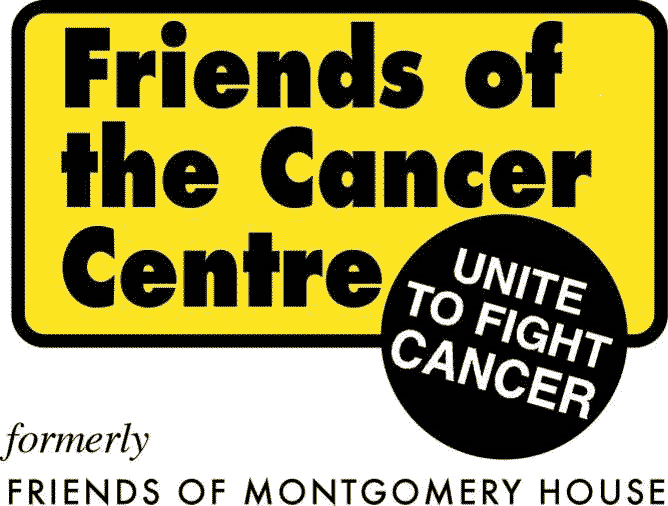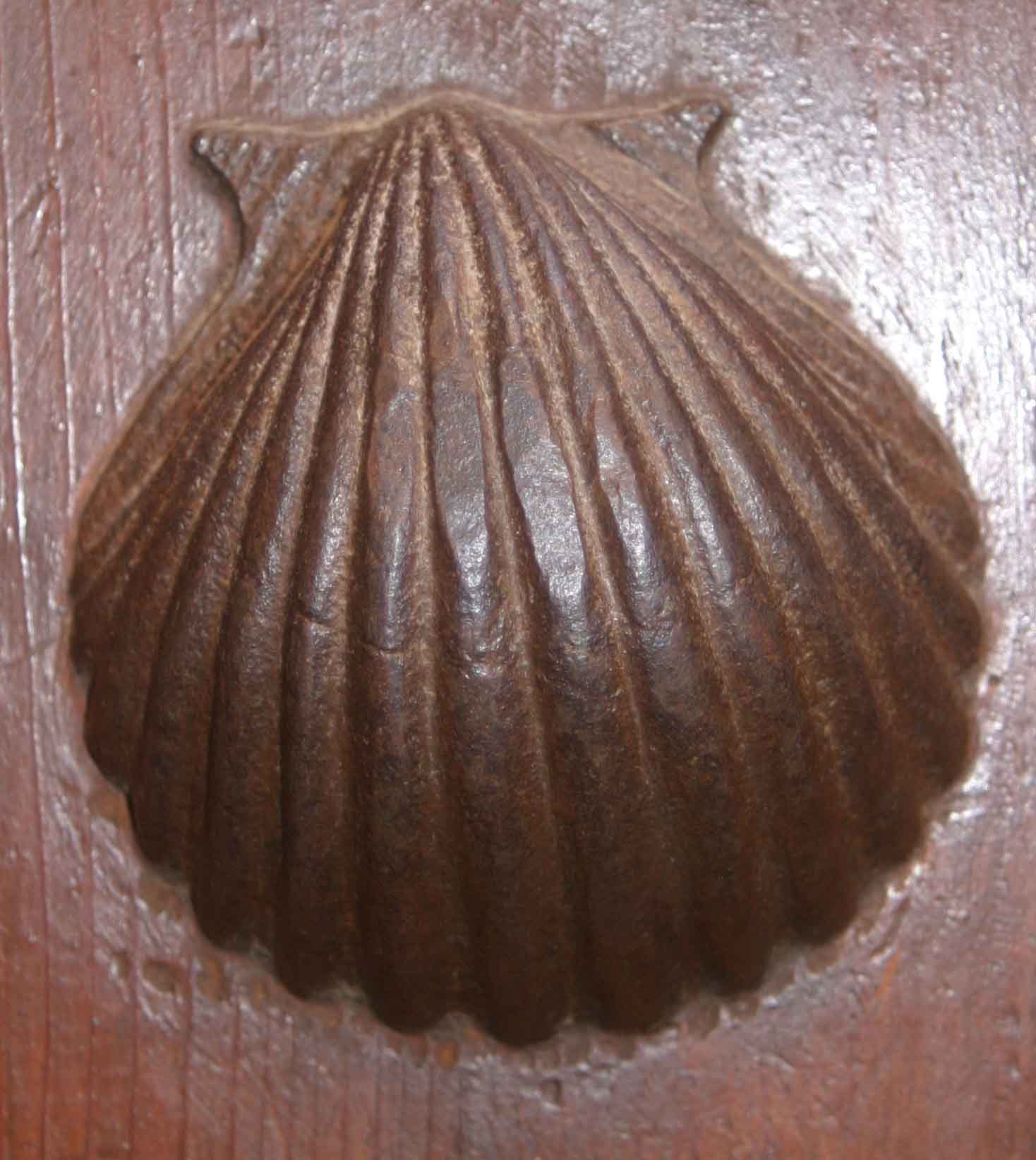Day 1 Diary
Stage 1 – St. Jean Pied De Port to Pamplona – 20/09/2006 - 65Km
Distance 50.6 miles (82km). Feet climbed 4,180. Cyling Time 4 hrs 58
After a gentle 10 Km climb in warm sunshine under clear skies the cyclists reached Valcarlos, a small village with quaint restaurants and bars. Then the climb really began and for the next 17 km it was all uphill but with only a few km of really steep climbing. Everyone completed the climb to the summit at ibanetta and there was a a small chapel with a bell to guide pilgrims in the foggy weather. Here there was a brief stop to admire the monument of Roland, commander of Charlemange’s Army, who met his fate in the vicinity
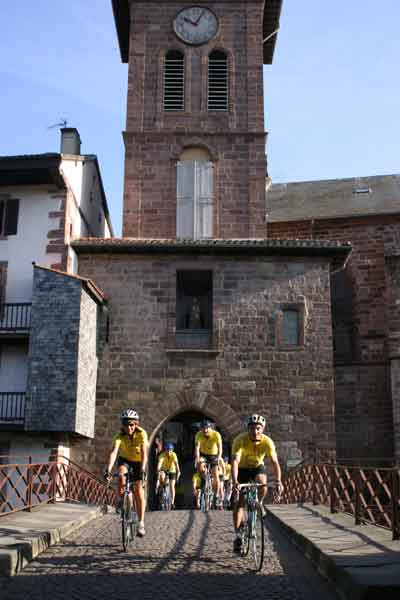
Captain Barney "Enough photos, off we go!"
Chaplain Oonagh "After me children, yea, though we cycle through the valley of...."
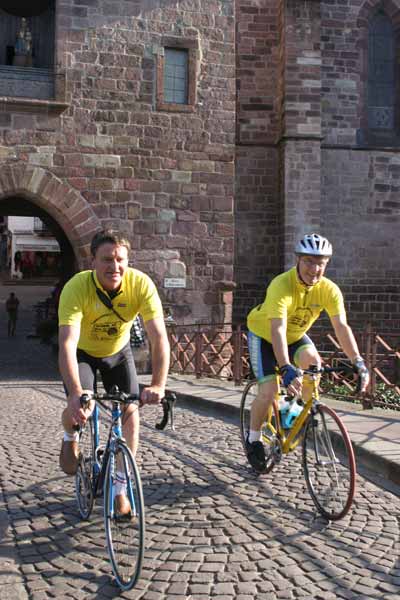
Hnadles better than the van, more power too
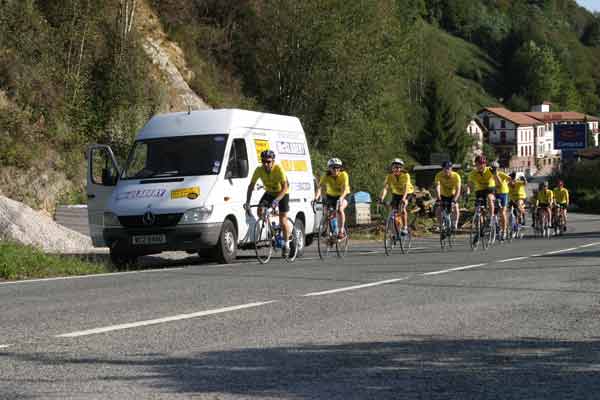
Frankie leads the yelow train roaring up the first climb
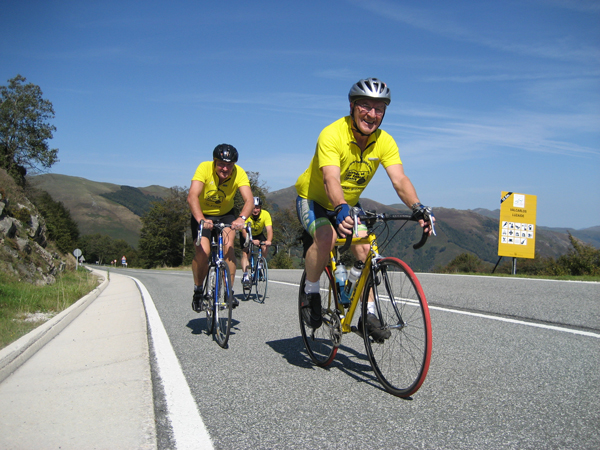
Larry laughs in the face of adversity, Paul curses his gears and the man who sold him the bike
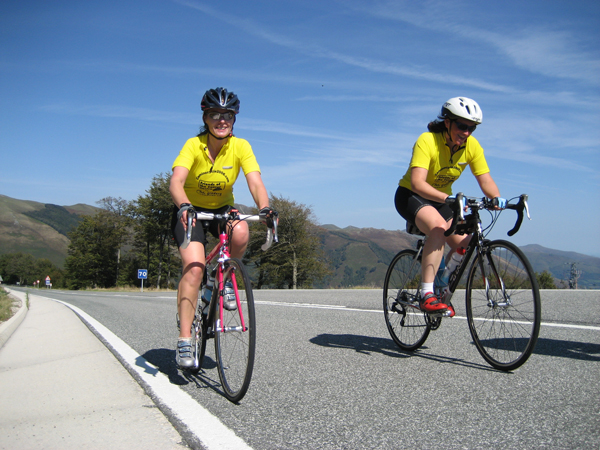
Mairead soaks up the rays, Susie powers by
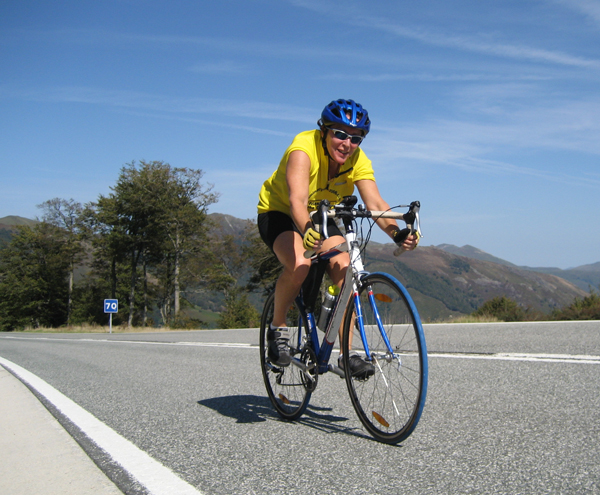
Nearing the top of the first climb, 480 miles to go!
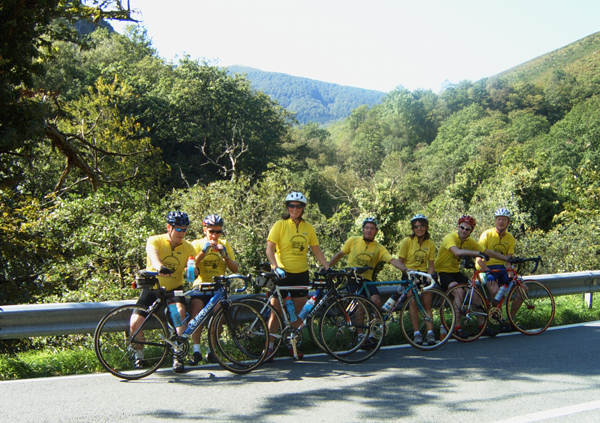
A well-deserved break on the first climb, Susie prefers to stand
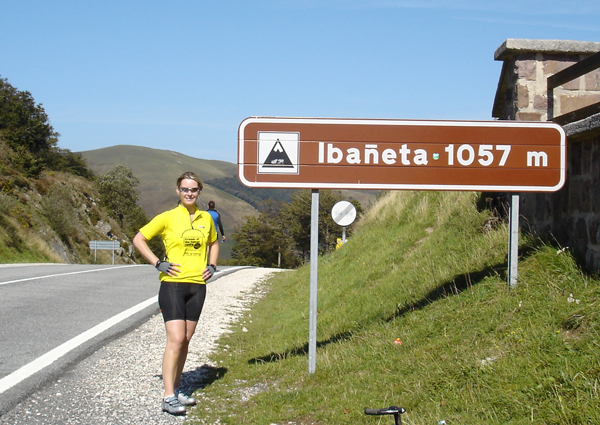
Mairead celebrates the first time over 1000 metres, 3,500 feet
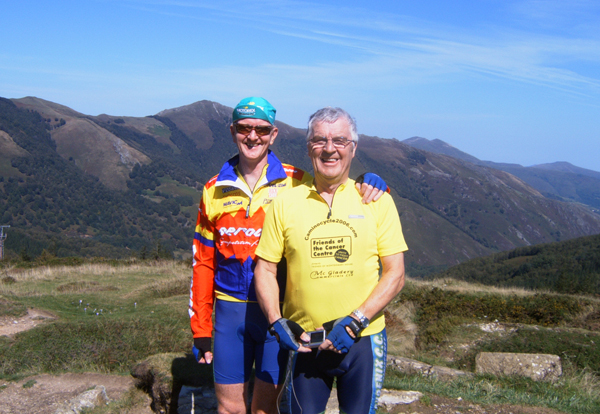
View from the top at Ibaneta, with Turlough and Larry blocking the view
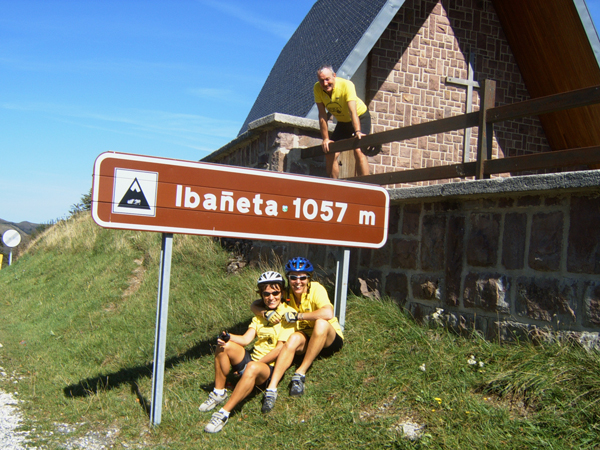
More celebration and well-deserved rest
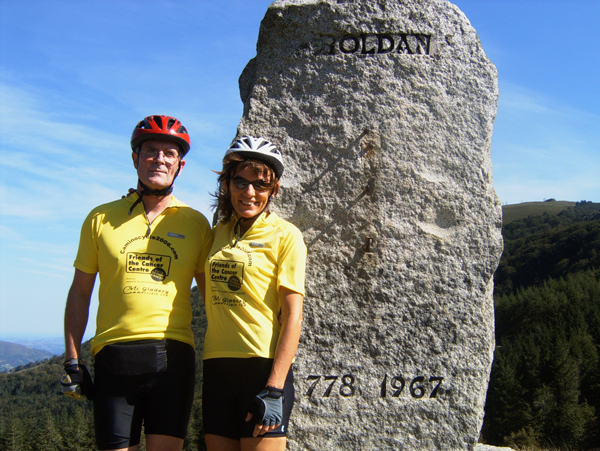
Stephen and Oonagh at the monument to Roland at Ibaneta
A short descent followed through Roncevalles and to Burgette , with its pretty 18 th century houses lining the main street. Refreshed from lunch, they continued downhill, but being surprised by two sharp climbs which upset the rhythm of the descent. A further stop for liquid refreshment and passport stamping was done in Larrasoaña. This village is a refuge for walkers and the Mayor can stamp your passport here. There is a beautiful church and statue of Santiago.
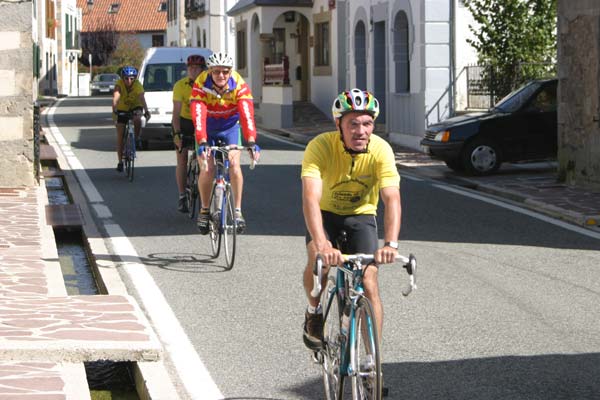
"If that multicoloured foreigner doesn't get out of my yellow train...."
Arrival in Burgette
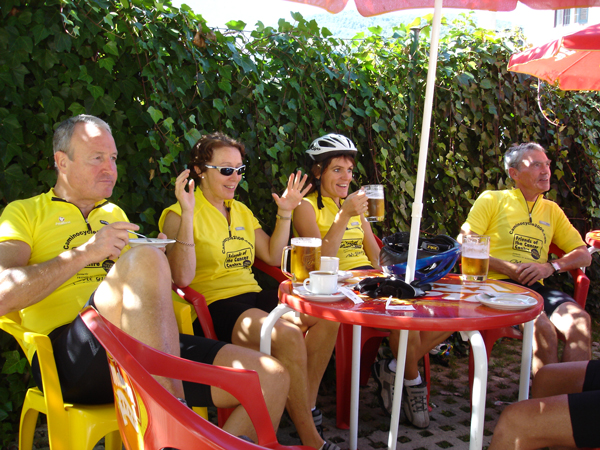
Lunch in Burgette. Susie stands by her "no alcohol on this pilgrimage" vow for a few minutes more
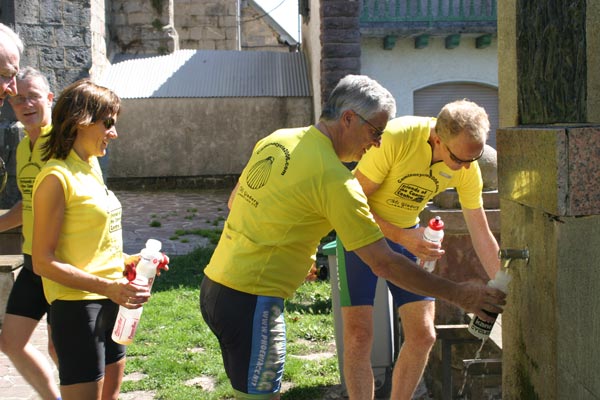
Filling up with water at the pilgrim fountain in Burgette, and dreaming of wine fountains to come
From here they followed the road into Pamplona. The last few miles were fraught with diifculty, battling against heavy traffic in busy city Roads. Paul Nolan was taken of his bike (no harm done, claim being prepared) by a heavily loaded German cycle tourist with all the cycling elegance and skill of a turnip. The hotel was hard to find but is top class, bringing a positive note to the end of the first day. The distance covered was 51 miles (82km), which was considerably longer than predicted.
The walking pilgrim (Seamus)
He walked from Ibaneta to Burgette, using the walker’ paths. This was a quite rough and hilly route, comprising 8 km.
After lunch he walked the last 15 km from near Zubiri to the hotel. This brings his first day total to 23 km (15 miles).
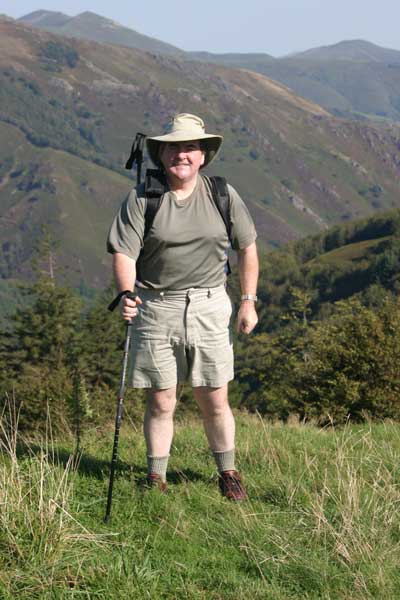
Seamus, after his first hundred yards, looking for a lower gear (never knowingly under-gadgeted). Note the staellite ariel to pick up Gerry's performance data (of which more later).
The walking route ran alongside the road but also contained its share of hairpins
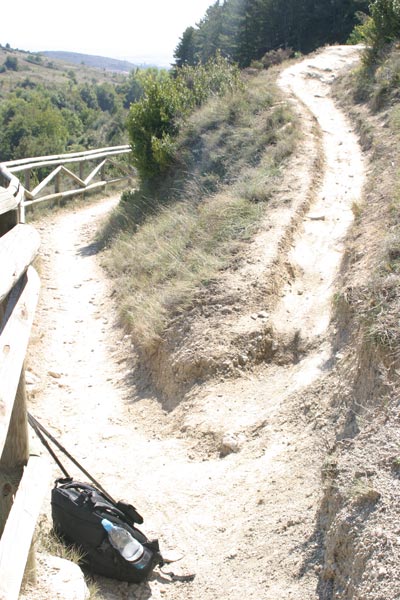
Here I hope to insert Gerry's performance data when it has been suitably massaged
Camino de Santiago de Compostela
The route covered in this cycle is amedieval pilgrimage route. Legend has it that the disciples of Saint James the Apostle took his body from Rome after he had been martyred in about 40AD. It was taken in a stone boat through the Straits of Gibraltar to Cape Finistaire. Here it was taken inland and buried in a wood where Santiago (which means Saint James) is now located.
The burial site was rediscovered by a monk in the ninth century and the area rapidly became a focus of medieval pilgrimage, with the Emporer Charlemange among the first pilgrims.
Many thousands made their way each year over a variety of routes converging on Santiago from many different directions.
Out route is the French route (Camino Frances) and is one of the busiest and best-recognised routes.
